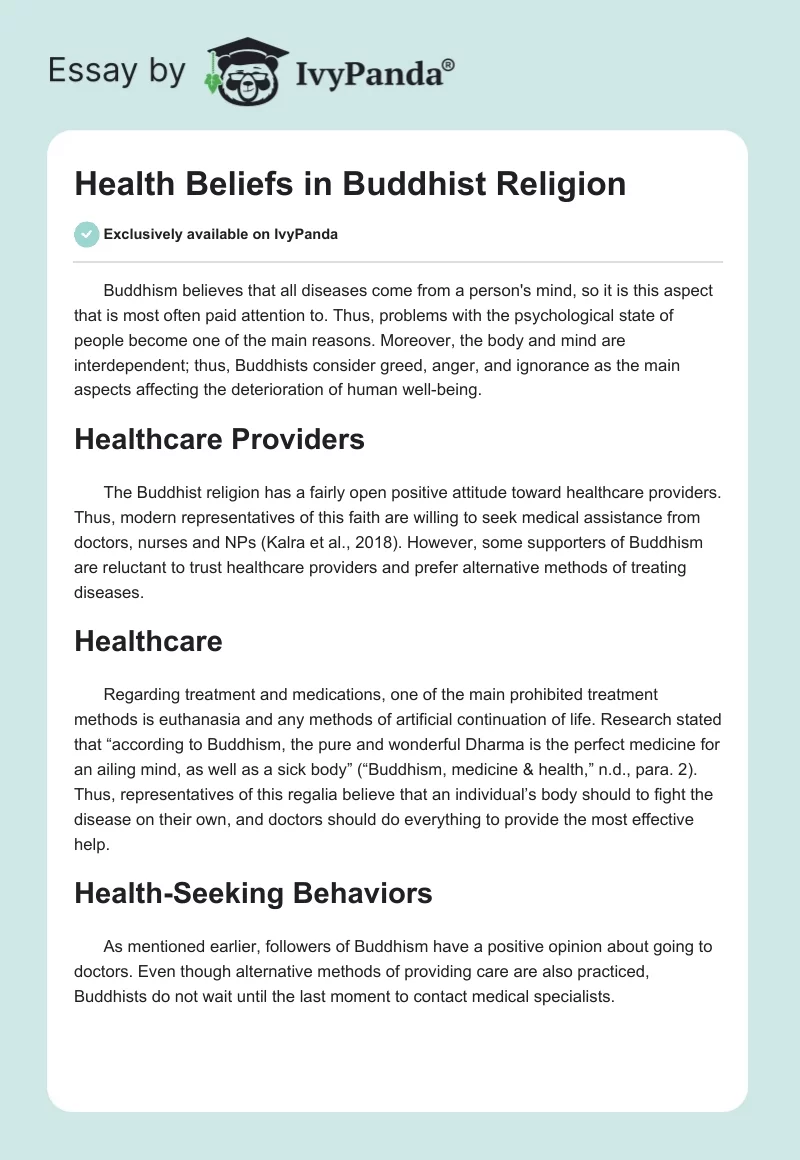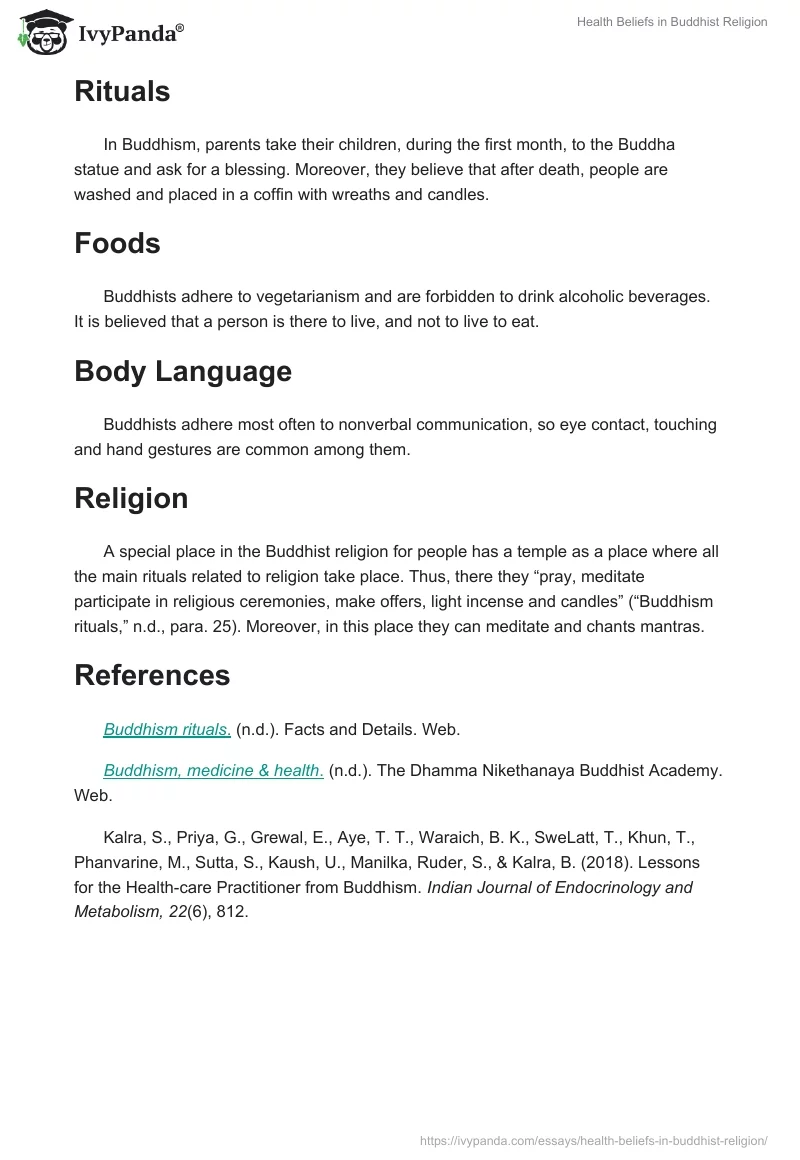Buddhism believes that all diseases come from a person’s mind, so it is this aspect that is most often paid attention to. Thus, problems with the psychological state of people become one of the main reasons. Moreover, the body and mind are interdependent; thus, Buddhists consider greed, anger, and ignorance as the main aspects affecting the deterioration of human well-being.
Healthcare Providers
The Buddhist religion has a fairly open positive attitude toward healthcare providers. Thus, modern representatives of this faith are willing to seek medical assistance from doctors, nurses and NPs (Kalra et al., 2018). However, some supporters of Buddhism are reluctant to trust healthcare providers and prefer alternative methods of treating diseases.
Healthcare
Regarding treatment and medications, one of the main prohibited treatment methods is euthanasia and any methods of artificial continuation of life. Research stated that “according to Buddhism, the pure and wonderful Dharma is the perfect medicine for an ailing mind, as well as a sick body” (“Buddhism, medicine & health,” n.d., para. 2). Thus, representatives of this regalia believe that an individual’s body should to fight the disease on their own, and doctors should do everything to provide the most effective help.
Health-Seeking Behaviors
As mentioned earlier, followers of Buddhism have a positive opinion about going to doctors. Even though alternative methods of providing care are also practiced, Buddhists do not wait until the last moment to contact medical specialists.
Rituals
In Buddhism, parents take their children, during the first month, to the Buddha statue and ask for a blessing. Moreover, they believe that after death, people are washed and placed in a coffin with wreaths and candles.
Foods
Buddhists adhere to vegetarianism and are forbidden to drink alcoholic beverages. It is believed that a person is there to live, and not to live to eat.
Body Language
Buddhists adhere most often to nonverbal communication, so eye contact, touching and hand gestures are common among them.
Religion
A special place in the Buddhist religion for people has a temple as a place where all the main rituals related to religion take place. Thus, there they “pray, meditate participate in religious ceremonies, make offers, light incense and candles” (“Buddhism rituals,” n.d., para. 25). Moreover, in this place they can meditate and chants mantras.
References
Buddhism rituals. (n.d.). Facts and Details. Web.
Buddhism, medicine & health. (n.d.). The Dhamma Nikethanaya Buddhist Academy. Web.
Kalra, S., Priya, G., Grewal, E., Aye, T. T., Waraich, B. K., SweLatt, T., Khun, T., Phanvarine, M., Sutta, S., Kaush, U., Manilka, Ruder, S., & Kalra, B. (2018). Lessons for the Health-care Practitioner from Buddhism. Indian Journal of Endocrinology and Metabolism, 22(6), 812.


